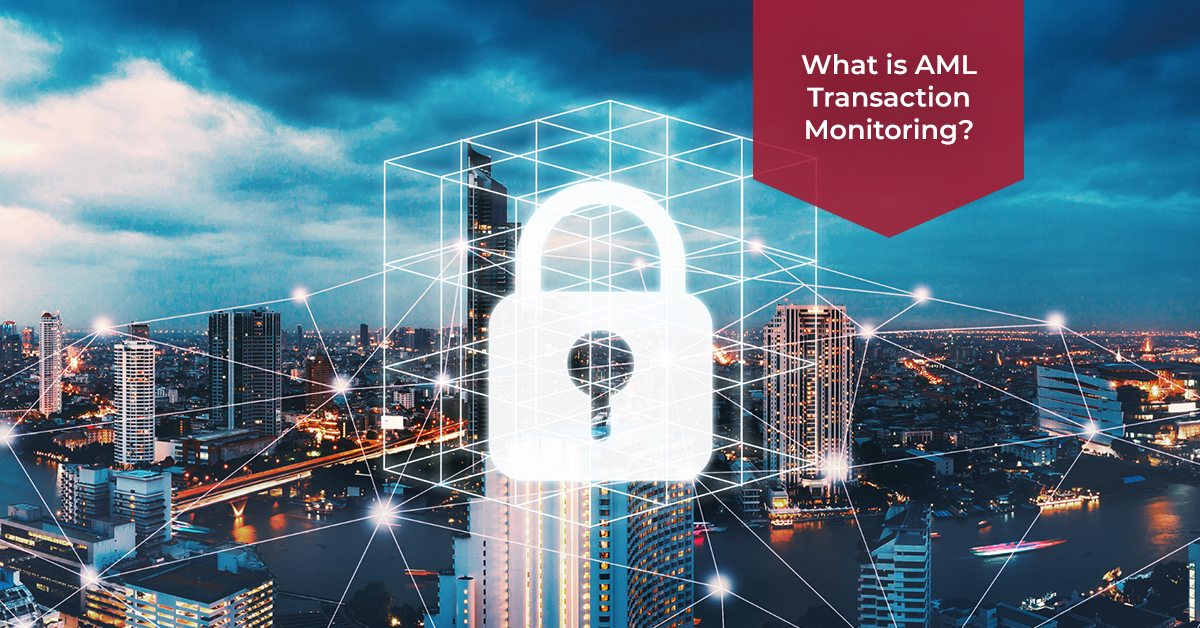
What is AML Transaction Monitoring?
Banks and other financial institutions can use AML transaction monitoring software to monitor client transactions for risk on a daily or real-time basis. The software can provide financial institutions with a ‘whole picture’ analysis of a customer’s profile, risk levels, and predicted future activity, as well as generate reports and create alerts to suspicious activity, by combining this information with analysis of customers’ historical information and account profile. Cash deposits and withdrawals, wire transfers, and ACH activity are all examples of transactions that may be tracked.
What are the different stages of transaction monitoring?
Money laundering, fraud, terrorist funding, and other sorts of financial crime may all be prevented via AML transaction monitoring. Although each transaction monitoring system is significantly different, they all monitor consumer transactions in order to detect suspicious behavior, assess risk levels, and even anticipate future activity. AML transaction monitoring is a time-consuming and difficult task that cannot be completed manually. Although the procedure may vary depending on the needs of a given institution, the fundamental aspects are fairly consistent.
Organizations might risk substantial fines if even one transaction is found to be linked to unlawful conduct. Fortunately, AML transaction monitoring does not have to be a difficult task. The following is a step-by-step strategy to achieving efficient monitoring:
- Assign a risk value to each customer: Each client will have a distinct amount of AML risk. This will be determined by current and historical factors such as industry and geographical location.
- Create a set of rules for each inherent risk: Financial institutions should assign distinct rules for each category based on the risk pillar. These guidelines should be adaptable and dynamic.
- Set up alerts: When your anti-money laundering (AML) regulations are activated, an alert should be sent out. This is not proof of unlawful action; rather, it indicates that more investigation is required.
- Deploy your compliance or risk department: Once an alarm has been generated, the transaction may be placed on hold while the compliance or risk team investigates further.
- Create a Suspicious Activity Report (SAR): If there is proof of a financial crime, a SAR or STR (Suspicious Transaction Report) should be filed. It’s also a good idea to report the transaction to the appropriate Financial Investigation Unit (FIU).
Every day, millions of financial transactions take place all around the world. By automating the transaction monitoring process flow, financial institutions may instantaneously control analyze millions of transactions. For banks, fintechs and other financial institutions, the AML transaction monitoring procedure is a legal necessity. FIs develop their own rule system depending on their need to monitor and analyze suspicious transactions. The transaction monitoring software issues an alert if these rules are triggered during consumer transactions. The procedure is automatically paused and investigated in detail by the Compliance or Risk Department when the program triggers a warning. It alerts transactions to AML, CFT, and KYC regulators if they identify criminality in the consumer transaction. A Suspicious Activity Report is a name for this type of report (SAR).
The Suspicious Activity Report plays a vital role in anti-money laundering AML transaction monitoring software (SAR). When a suspicious scenario is detected, the transaction Monitoring unit automatically intervenes, and the transaction is thoroughly scrutinized by the Firm’s Compliance or Risk Department. If SAR identifies fraud in a consumer transaction at this stage, suspicious transactions are reported to the AML, CFT, and KYC regulators.
How do fintechs monitor transactions?
The systems are built on top of a company’s business and transactional data systems, analyzing it and generating ‘Alerts’ for the company’s compliance teams to examine depending on its clients’ activities. The ‘Alerts’ are based on a variety of customizable rules that the organization selects depending on its business and customer characteristics. These principles, which were developed based on common money laundering activities observed throughout the world, are on the basis of transaction monitoring systems. The question of how does AML transaction monitoring work can be answered as follows:
- Increase automation – reduce superfluous warnings by adapting scenarios to customer or transaction risk and concentrating on regulatory objectives by identifying suspicious activity at the FI and end-customer level.
- Over time, improve efficacy by fine-tuning rules without the need for technical assistance.
- Give regulators and banking partners peace of mind with a ‘tried and true’ system that includes a detailed audit record of monitoring and investigations.
- Quickly, conveniently, and securely implement – REST APIs or batch file uploads are simple to implement.
What are red flags in AML transaction monitoring?
Financial institutions can employ red flag indications to assist them to take a risk-based approach to CDD regulations, such as knowing who the beneficiaries are and where the money comes from. Regulators may suspect money laundering (ML) or terrorism financing (TF) if a red flag signal is present. These red-flag signs are important to SRBs and law enforcement officials while monitoring or studying the professional conduct of professionals or consumers. The following Red Flags in the Funding Fund for Money Laundering and Terrorism were also identified in the Financial Action Task Force FATF Report.
When the source of financing does not address legal income or legal trade, it should raise concerns about the transaction’s foundation. The following are red flags in AML transaction monitoring:
- An individual running a cash-intensive firm provides a considerable quantity of private capital.
- The engagement of a third-party private banker who has no obvious ties to the company or a genuine reason for their involvement.
- A large quantity of private money or cash is out of proportion to the socioeconomic profile of the people engaged.
- The money is coming from someone who isn’t a bank or a financial institution, and there’s no logical or economic reason for it.
